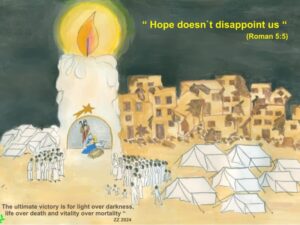A Day of Spectacular Beauty

by Emma Hebb
Emma Hebb holds a BScH in Environmental Science and lives in Second Falls, New Brunswick. She is currently the co-convenor of the Environmental Working Group of the United Church’s Maritime Conference. Emma works in youth ministry at St. Mark’s United in West Saint John. She is a member of Wesley United in St. Andrew’s New Brunswick and was raised by Three Harbours Pastoral Charge in Wallace, Nova Scotia. She is a Girl Guide leader and the current chair of the Sierra Club Canada Atlantic Canada Chapter
Today I did one of my favourite things in the world, I swam in a lake. I have often contemplated that all my time fighting for environmental causes can be traced back to my love of swimming in lakes. As a child, spending time at the family cottage on Skiff Lake New Brunswick was a joy. I now always lament that I have to work and that the care-free lake summers are a thing of my past. Needless to say, where I feel closest to creation is swimming in lakes. There was a time in a past position where would visit up to 6 lakes a day, wishing I had time to swim in each of them. Today I got to swim in Lake Izabal, near El Estor.
On our first day here in Guatemala, Naty told us that we should both learn the reality of mining but also see the beauty of this country. This was certainly a day of spectacular beauty. We ate lunch riverside while discussing that it really did feel like we might be on vacation. We then traveled by boat out on the lake where we saw cormorants, herons, seagulls, and monkeys. Monkeys in their natural habitat is certainly a new experience for me. The lake is nestled between two mountain ranges which made it seem particularly tranquil against the backdrop of stark mountains. I longed at one point for a Secchi disk to measure the clarity but when swimming noted that I could still see my feet on the bottom, and so concluded that it is much clearer than the tea-coloured lakes of the Magaguadavic River system I call home. The diversity of plant and animal life is a testament to the lake’s health. A large area of the shoreline is protected. This allows the natural filtration system to stay intact and do its job. And how I wish I could just end this post here. A short summary of the spectacular ecology of Lake Isabel. Unfortunately, though, also along the coast is a nickel mine.
Why is it that the sighting of these things always seems so horrid? It seemed like only metres away from the intake pipe of the mine was the beginning of the protected coastline. Similar to the fact that the proposed Scission Brook mine in New Brunswick will be on the headwaters of one of the last viable Atlantic Salmon rivers. Similar to the proposed drilling for oil at Old Harry in the Gulf of St. Lawrence, a migratory path for many species, including right whales. It seems we always juxtapose these places of wonderful beauty and ecological importance with development that threatens their viability.
The reason we travelled today to El Estor wasn’t just to swim in a beautiful place but also to learn the horrific history of this nickel mine. We went swimming on the lake with Angelica Choc and her son Victor. Angelica lost her husband when mine security shot him. The trial is ongoing. It is just a hint of the stories of violence we are to hear over the coming 24 hours.
All of these stories over the past week have made me wonder why we need all of the projects here and those at home. Why does it seem we need all of the earth’s resources out of the ground at this point of time? Sister Maudilia told us a parable of chickens the other day that I found useful when considering this problem. If you have 20 chickens, you don’t kill them all at the same time, you kill them as you need them for food and allow the others to reproduce so that you’ll always have chickens. Doesn’t that make more sense? Why do we need to mine lesser quality ore and use higher risk techniques when we already have so much of this material out of the ground? Maria Choc, Angelica’s sister, asked us today to reflect on the fact that God made creation to share, not to take and use.
Yet I feel hope knowing that there are so many of us working on this problem. I find inspiration simply in the fact that 12 people with church association cared enough to make a trip like this to Guatemala. I had a moment with a technician at COPAE, an organization monitoring the effects of the Marlin Gold Mine, that I could easily have had with any of my colleagues back home; discussing the new dissolved oxygen probe in the mail and checking out some HACH colorimeters. So why do the forces of natural resource extraction seem so strong? I know that there are smart, dedicated people across this world that are committed to leaving some chickens for future generations; people who love clean water, fresh air and fertile land and don’t want to compromise them for a piece of paper that supposedly has more value than keeping the ecosystem intact. So while I think of communities back home that struggle against mining, fracking, and off-shore drilling, and communities here that fight for many of the same things, I realize we’re all trying to save our world.

Our reception in El Estor: Angelica Choc, her son Victor, Maria Choc, Raul Caal, Elaine Kellogg ( from left to right) and Helen Knott (in back)















